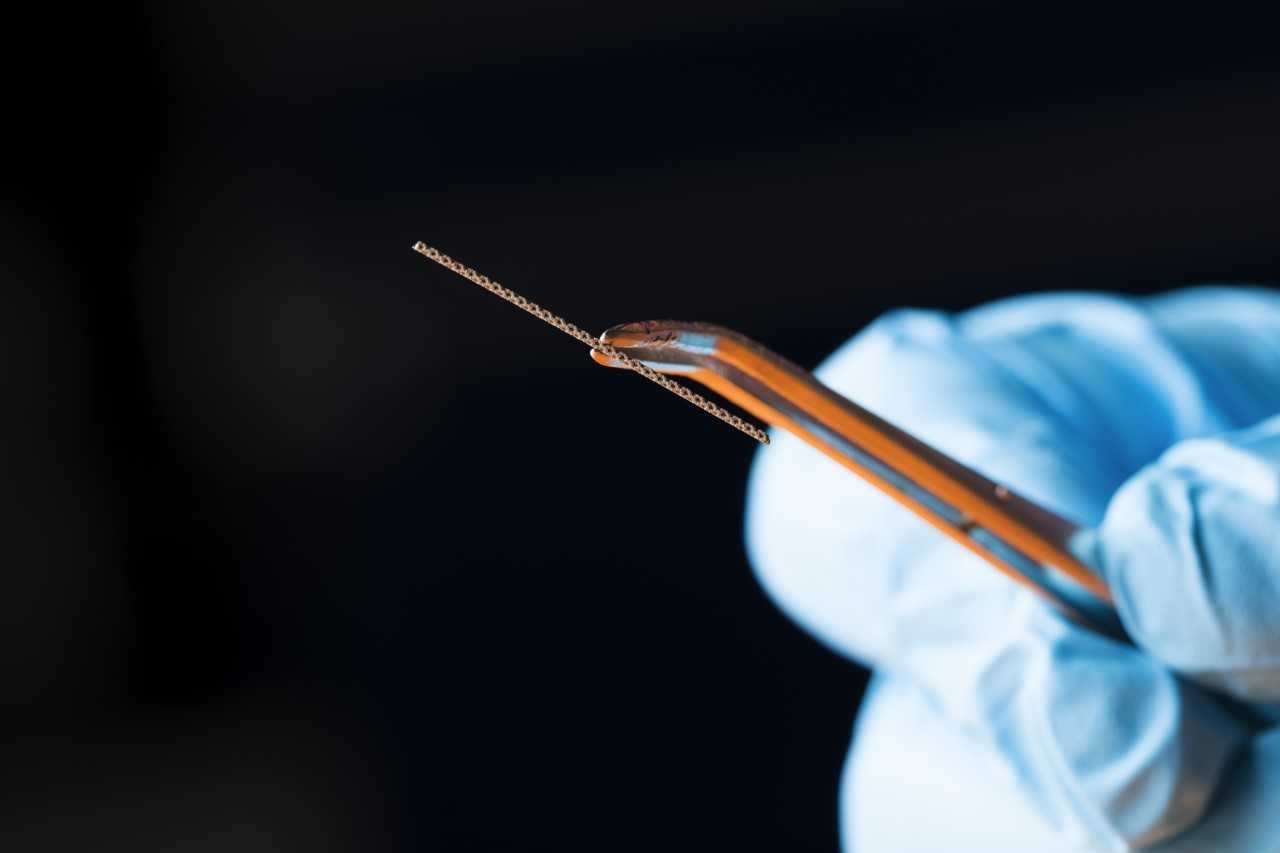TU Delft researchers are developing a material coated with silver and zinc nanoparticles that should help prevent bacterial infections around hip implants.
Miniaturised 3D printed implant that could be used for laboratory testing of the efficacy of the introduced antibacterial coating. (Photo: Marieke de Lorijn)
As if the operation itself wasn’t exasperating enough. Around 1% of people with a hip implant catches an infection that is often so hard to treat that the implants need to be removed. Implant-associated infections occur even more frequently in trauma patients and patients with compromised immune systems, such as those being treated for cancer.
TU Delft researchers are developing a material that should help tackle this clinical problem. A team led by Prof. Amir Zadpoor of the Department of Biomechanical Engineering, 3D printed a highly porous metal implant in which bone cells like to grow, and incorporated silver and zinc nanoparticles onto the surface of those implants. They recently wrote about their feat in the journal Acta Biomaterialia.
‘Silver ions kill bacteria’
People like to wear silver jewellery, use silver cutlery. Nothing unhealthy about that. But when released in high doses inside the body, this noble metal can actually be quite toxic. “Silver ions damage human cells, but they are also very effective in killing bacteria. We witnessed this in our experiments. No bacteria survived exposure to the silver ions released from nanoparticles,” says Zadpoor.
The trick is to kill the bacteria whilst not harming the human cells too much. “That is where the zinc particles come into play. Silver and zinc ions work synergistically, meaning that we could get a very strong antibacterial response with up to 100 times lower concentration of silver ions. Decreasing the required concentration of silver ions helps us to protect human cells while killing bacteria. An added advantage of the zinc is that this element stimulates the division of bone cells, thereby helping bone regeneration. Or so it seems in the lab. The next step would be to evaluate the implants in vivo.”
‘Infections around implants are extremely difficult to treat’
But why not just treat these patients with antibiotics? “Infections around implants are extremely difficult to treat,” says Zadpoor. “Bacteria create biofilms on the surface of implants. This is a slimy extracellular matrix that protects the bacteria from immune cells and antibiotics. What’s more, immune cells are slightly askew because they are also confronted with foreign body material. That already takes a lot of energy from them.”
Unwise use of antibiotics could also greatly increase the chance of a surge of antibiotic-resistant bacteria. “The current practice is to remove the implant, place some temporal filling material, cure the infection and put back a new implant. A series of intensive interventions. We hope these operations can be avoided in the future.”
- N.E.Putra, M.W.A.M.Tierolf, M.Minneboo, A.C.Fluit, L.E.Fratila-Apachitei, I.Apachitei, A.A.Zadpoor, Biofunctionalization of selective laser melted porous titanium using silver and zinc nanoparticles to prevent infections by antibiotic-resistant bacteria, Acta Biomaterialia, 4 March 2020
Do you have a question or comment about this article?
tomas.vandijk@tudelft.nl


Comments are closed.